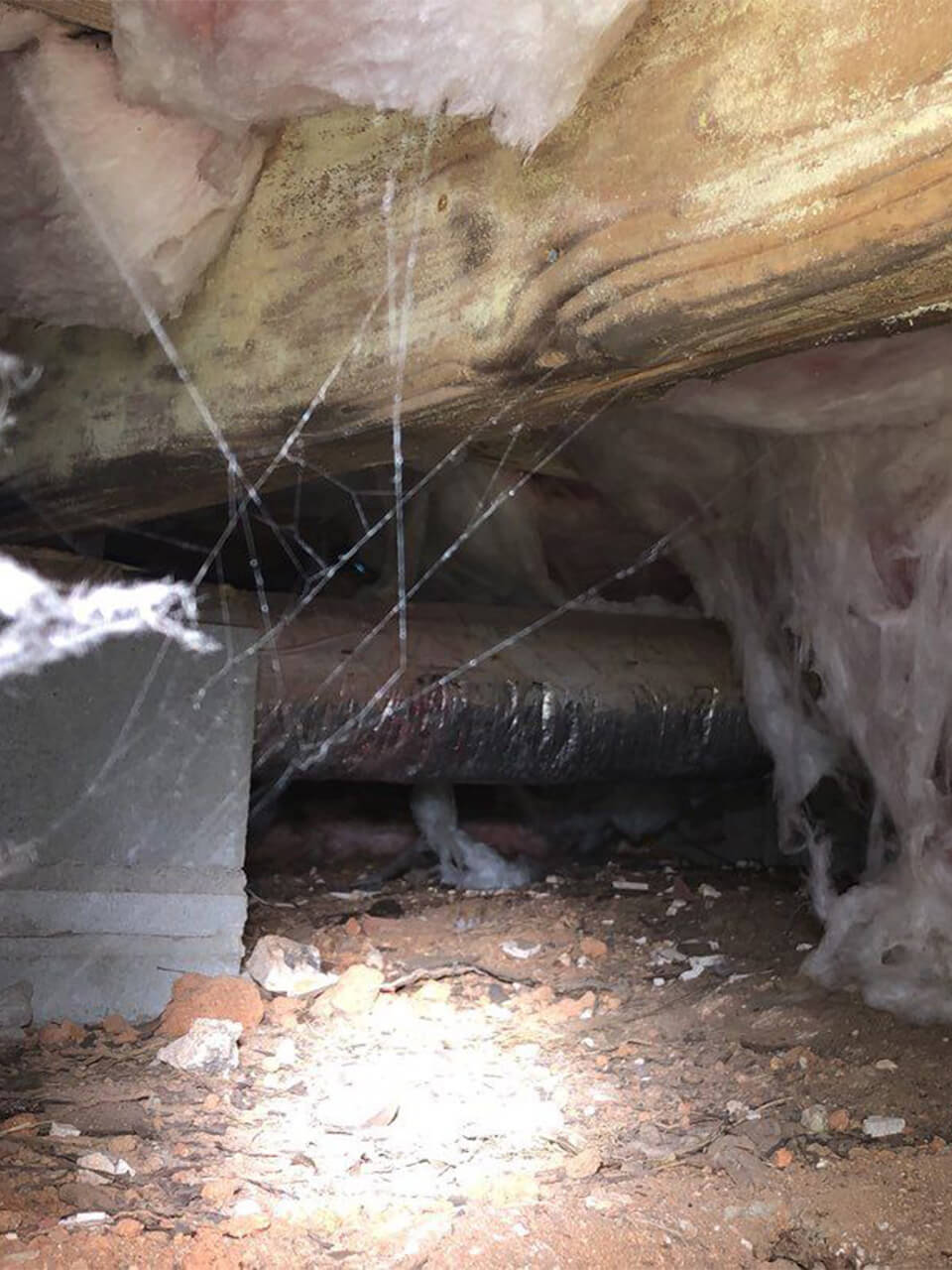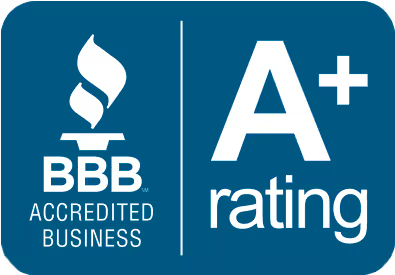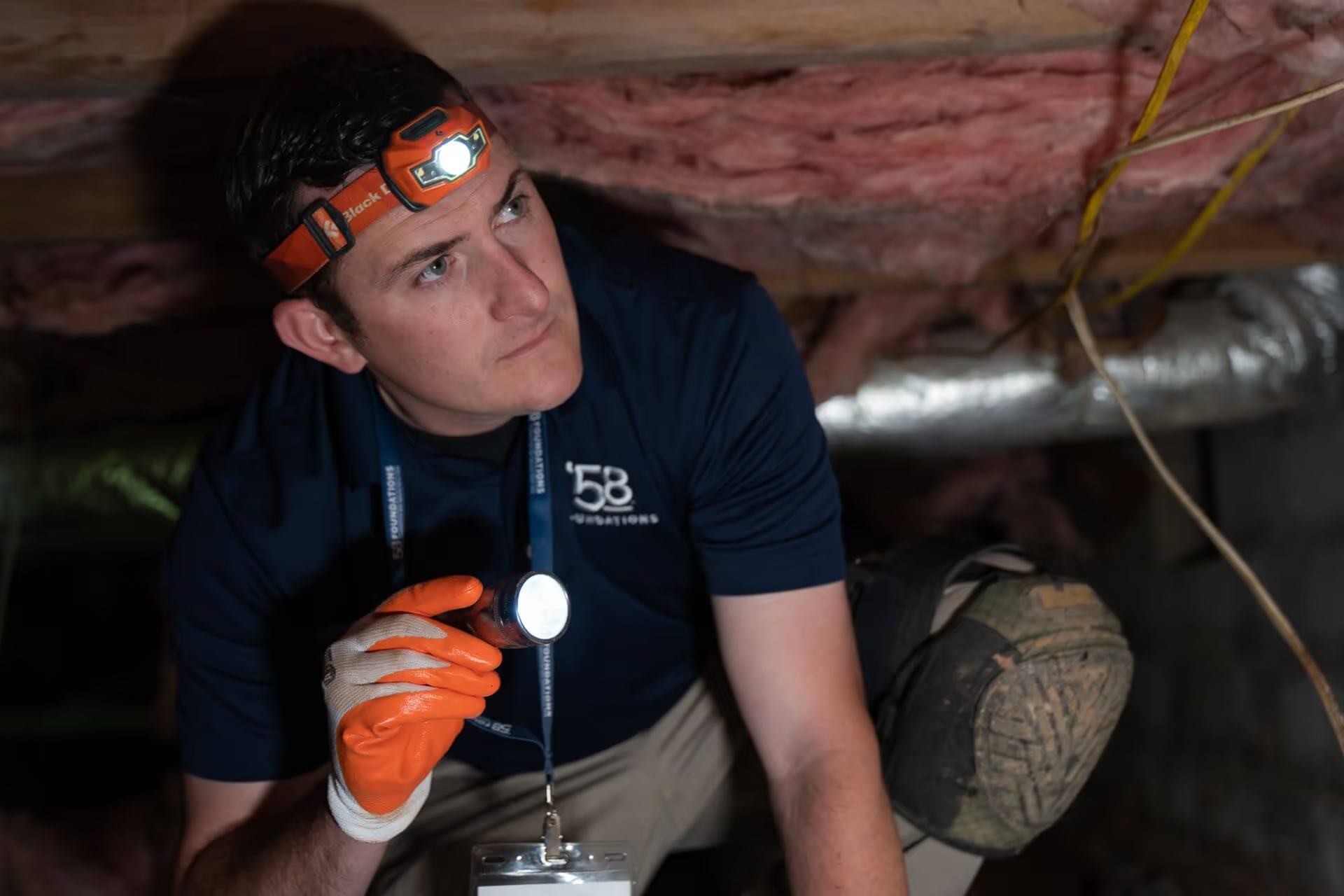A damp basement or crawl space can lead to mold, wood rot, and foundation damage. Discover the causes of excess moisture, the risks it poses to your home, and how professional waterproofing and encapsulation can keep your home dry and safe.






The basement or crawl space of a home often goes overlooked, yet it can harbor mold that, if left untreated, can pose risks to your health and the structural integrity of your home. Mold growth is a common issue in damp basements and crawl spaces.
The most noticeable sign of mold growth in a damp basement or crawl space is the presence of moisture. High humidity levels, water damage, stains on ceiling tiles and walls, a musty smell, and visible dark patches indicate the presence of fungal growth.
Mold growth is a significant concern that demands attention. Manifestations of mold growth in damp basements or crawl spaces include:
The appearance of visible mold growth on walls and ceilings necessitates professional removal services. Mold exposure carries health risks, particularly for those with weakened immune systems. Adequate safety precautions are imperative during cleanup, and thorough environmental cleanup is crucial to prevent lingering harm.
Prompt action is crucial upon detecting signs of mold, as airborne spores from molds can lead to respiratory issues like asthma attacks and allergic reactions. Specialized equipment, such as hygrometers, infrared cameras, and moisture meters, may be needed to assess the extent of mold growth. Consequently, enlisting professional assessment and remediation before the situation worsens is advisable.
Evident mold growth on walls and ceilings is a grave mold issue in a basement or crawl space. Mold texture and color can vary, appearing as streaky black lines, powdery white patches, or even circular or raised formations. Visible mold growth typically arises from leaks or flooding, resulting in excessive dampness or wetness in parts of the basement or crawl space. Neglecting this issue can lead to long-term structural damage.
Our team of expert mold professionals can discern visible mold growth on walls and ceilings, distinguishing between minor concerns that can be mitigated through straightforward solutions like ventilation and dehumidification and more severe cases necessitating professional removal services.
Mold exposure is known to trigger adverse effects on human health, from eye irritation and upper respiratory tract infections to allergic reactions and asthma attacks. Those with compromised immune systems face higher risks, potentially leading to lung infections. Rigorous safety measures must be adhered to during cleanup tasks.
Environmental cleanup is vital to prevent any enduring repercussions stemming from previous infestations or recent remediation efforts. Two primary approaches are containment and physical removal. Containment involves using polyethylene sheeting and plastic barriers to prevent mold spores from spreading to other areas of the home.
Physical removal encompasses activities like vacuuming with a HEPA filter, wiping surfaces with specialized anti-fungal cleaning solutions, and discarding heavily mold-contaminated materials.
The efficacy of environmental cleanup hinges on various factors, including the age of the contamination, the type of surface being treated, and the thoroughness of the process. In cases of prolonged mold exposure, physical removal may be necessary to fully address health concerns. If a home has recently suffered water damage, containment measures may suffice. Ultimately, the paramount consideration is ensuring a safe environment while averting potential disaster.






We respect your privacy. By submitting, you authorize '58 Foundations and Waterproofing to reach you via call, email or text for information about your project needs. We will never share your personal information with third parties for marketing purposes. You can opt out at any time. Message/data rates may apply. Consent is not a condition of purchase. Privacy Policy